A warm start to winter adds to challenges for Vermont’s logging industry
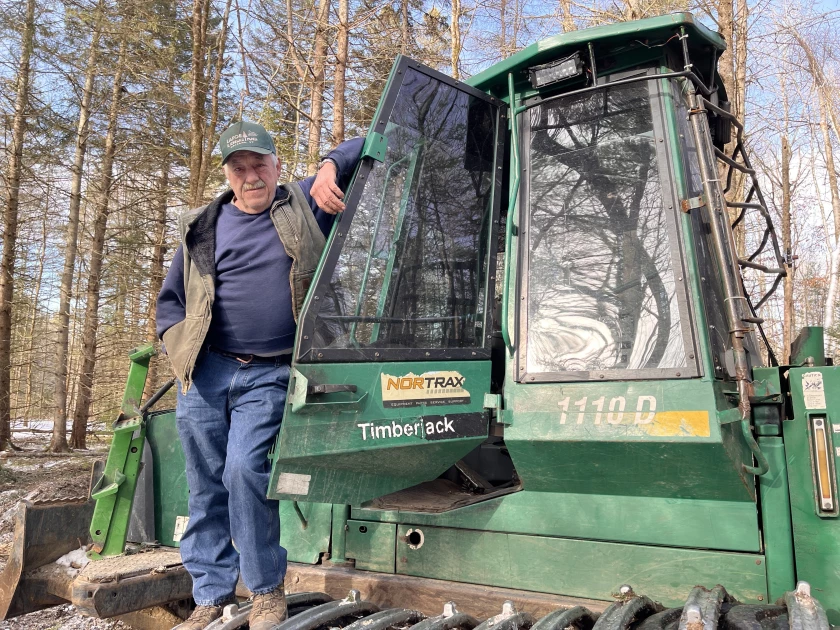
Brian Lafoe, standing outside the cab of his forwarder, says the warm start to winter in Vermont has already taken a toll on his logging business this year. (Henry Epp/Vermont Public)
Recent snowfall has made it feel more like winter in Vermont. But warm temperatures through December into early January have already taken their toll on one industry: Logging. Loggers rely on frozen ground to access certain forested areas, but that’s been difficult so far this year. And the warming climate is just one of the challenges the industry is facing.
Logger Brian Lafoe knows this all too well. On a recent January morning, he was in the cab of a machine called a forwarder in a patch of woods in East Burke. He maneuvered its mechanized arm to pick up logs that his son-in-law felled, split and piled along a road they cut through the forest. As it moved through the woods, the forwarder left ruts in the ground. Usually, he said, that’s not an issue at this time of year.
“In the wintertime, you got this wet ground, the ground gets froze up, our machines go over it good, we don’t do no damage,” Lafoe said.
But on this sunny morning, the temperature began to rise above freezing, meaning Lafoe was running out of time to do this work, or else he’d start to damage the soil.
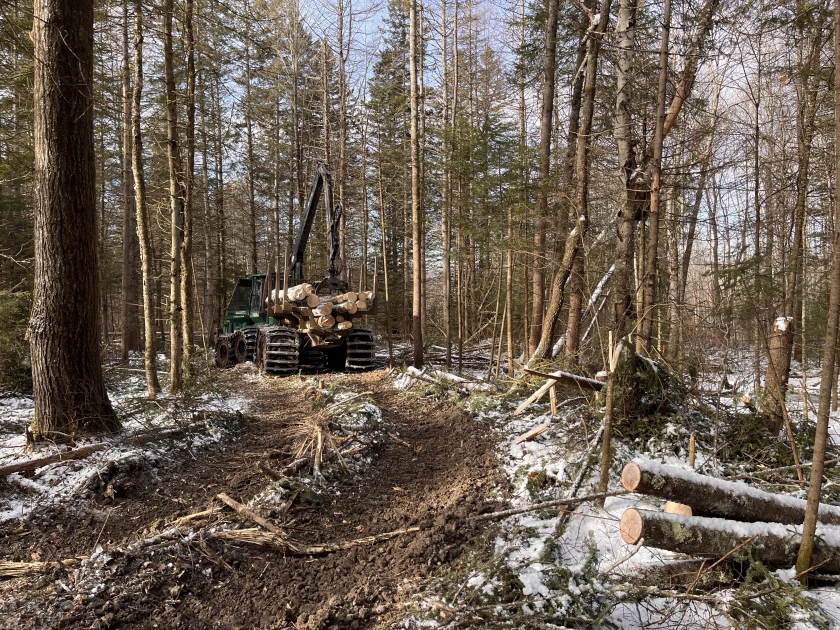
Brian Lafoe’s forwarder picks up logs along a path in East Burke, Vermont. The machine has left shallow ruts in the ground, which is typically not an issue in winters with more snow. (Henry Epp/Vermont Public)
Winter is a crucial season for loggers like Lafoe. Typically, the frozen ground allows them to access sensitive wooded areas nearly everyday. But this year, temperatures surged into the 50’s in early January, and Lafoe pointed to areas of mud and ice where there should be deep snow.
“You shouldn’t be able to see this ground,” he said. “We should have snow right now. Life should be good. It should be zero degrees. We should be going.”
Instead, this job took Lafoe about two weeks longer than normal, and he’ll have to do more work in the summer to repair the rutted logging trails. All told, he guesses the weather will increase his costs by about 17%.
The warm winter is just the latest factor to hit Lafoe’s bottom line. The cost of diesel fuel shot up in 2022. So did prices for replacement parts to keep his machinery running. Luckily, he paid off all his equipment, like the forwarder, years ago.
“If I didn’t own all this stuff, I probably wouldn’t be doing it right now,” he said. “I’d be retired.”
In the 35 years since Lafoe started logging, the state has adopted stricter regulations for harvesting timber. These rules are intended to protect water quality by stopping erosion and preventing sediment and other materials from getting into streams and brooks. Lafoe said he’s happy to follow the rules, though the cost adds up. Logging practices, he said, have changed a lot since he started his business in 1988.
“No one cared, you know what I mean? Now, it’s like, we spent a lot more time putting in bridges, putting in culverts,” he explained. “It’s taking better care of the land.”
Walking through the land on which Lafoe is logging, forester David Senio explained that these woods used to be farmland.
“A forest is a dynamic thing,” he said. “What we’re doing is we’re manipulating this forest to help create conditions to become more like forest than old agriculture land.”
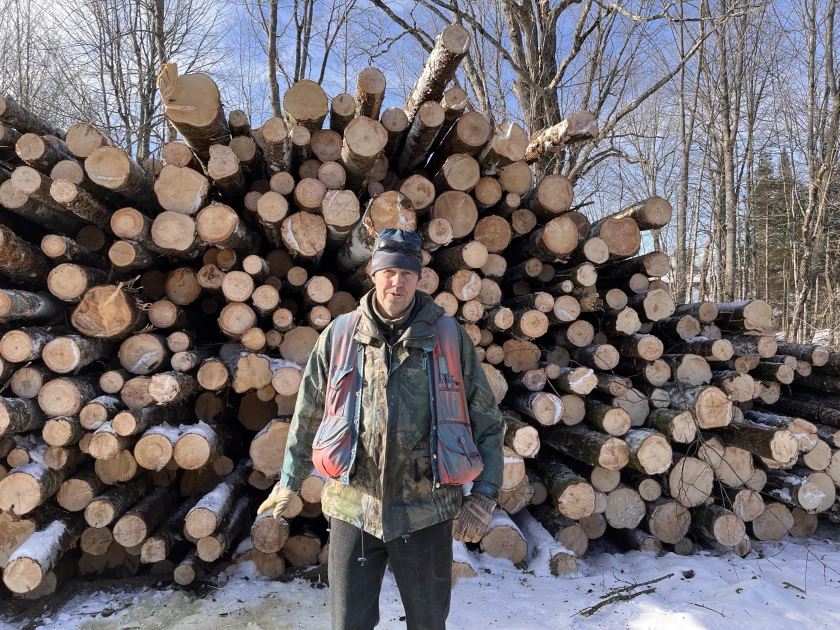
Forester David Senio, standing in front of a pile of balsam fir logs, said responsibly managing forests can make them healthier in the long run. (Henry Epp/Vermont Public)
With climate change, winters are becoming shorter and more unpredictable in Vermont, and cutting down trees, which store carbon, could be adding to that climate impact. But Senio argues there’s also a climate-positive effect of logging: Responsibly managing forests like this one can make them healthier in the long run. Warming winters, though, limit how often loggers can do that work.
“How do you make more productive days in a year? You don’t,” he said.
All of Vermont’s $1.4 billion forest products industry is impacted by the changing climate, he said, not just loggers, but sawmill operators too.
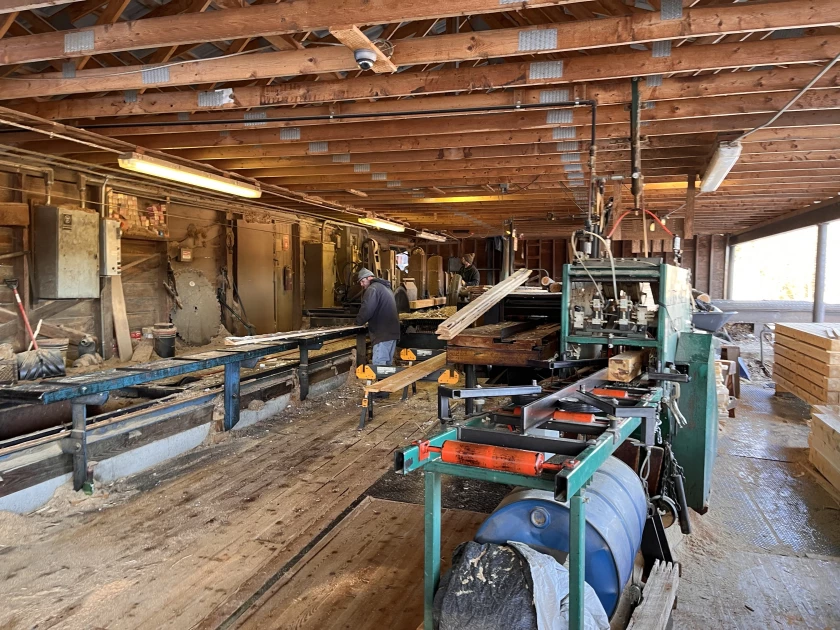
Workers at Goodridge Lumber in Albany, Vermont operate the company’s sawmill. Goodridge’s store of logs is running low, due to warm temperatures that have limited the timber harvest. (Henry Epp/Vermont Public)
In Albany, Vermont, workers at Goodridge Lumber fed white cedar logs along a spinning saw blade, cutting them into posts and boards. This mill, of course, relies on loggers for wood. But because loggers haven’t been able to harvest as much this year, owner Colleen Goodridge said her sawmill’s store of fresh logs is running low.
“This year, we don’t have that extra inventory that we had last year. So we are hoping that, you know, we have a strong next few weeks,” she said.
Sales are good right now, Goodridge said, but it’s not clear how long that will last. She’s thinking of ways to diversify her business, like finding markets for lower-quality wood. Still, she’s trying to be optimistic about the rest of the season.
“I’m hopeful. And you know, we’ve had cold weather in April,” she said. “We’ve had April’s that hung on and hung on and hung on. So we just don’t know.”
Goodridge has been in the lumber business for 49 years. Her sons are now co-owners. But she’s worried about the future of this industry in Vermont. She said she’d like to see more young people enter the business, but it’s not for everyone.
“You got to have a strong mind, body, soul and a business head, and be willing to put in the time that it takes,” she explained. “And for some reason, generations have done it.”
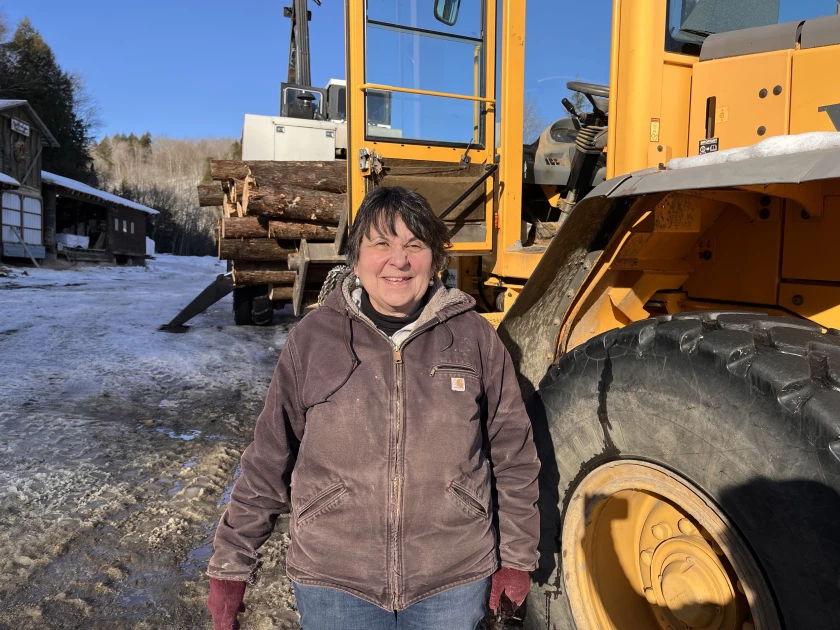
Colleen Goodridge, owner of Goodridge Lumber, is holding out hope that conditions will improve this winter, allowing loggers to harvest more wood. (Henry Epp/Vermont Public)
The next generation, however, will have to contend with high costs and the unpredictability of a changing climate.
“One of the many challenges of life, they say, you know, ‘to live is to experience change,’ ” Goodridge said with a laugh. “I guess we’re living.”
Have questions, comments or tips? Send us a message or get in touch with reporter Henry Epp @TheHenryEpp:
